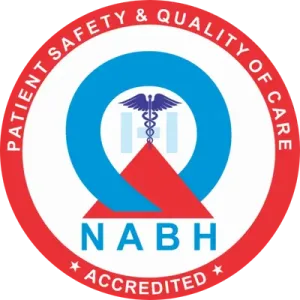Umbilical Hernia Treatment - Mukat Hospital
An umbilical hernia happens when a part of the intestine omentum pushes through an opening in the abdominal muscles near the belly button (umbilicus). This condition is common, especially in infants, and is usually harmless. However, there are instances where it can lead to complications, necessitating medical attention. Mukat Hospital is well-equipped to provide comprehensive care for umbilical hernia patients, utilizing advanced medical technology and a team of experienced healthcare professionals.
What is an Umbilical Hernia?
An umbilical hernia appears as a bulge or swelling in the belly button area. It is particularly common in infants, especially those born prematurely. Typically, these hernias close on their own by the time the child is 1 to 2 years old. However, in some cases, an umbilical hernia can persist into adulthood or develop in adults due to various reasons such as:

- Obesity: Excess weight can place additional pressure on the abdominal area.
- Multiple Pregnancies: The abdominal muscles may weaken after several pregnancies.
- Chronic Cough: Persistent coughing can increase abdominal pressure.
- Heavy Lifting: Frequently lifting heavy objects can strain the abdominal muscles.
- Constipation: Straining during bowel movements increases pressure on the abdominal muscles.
- Previous Surgery History: Past surgeries can weaken the abdominal wall, making it more susceptible to hernias.
Symptoms of Umbilical Hernia
The primary indication of an umbilical hernia is a noticeable bulge near the belly button. Other symptoms might include:
- Pain or tenderness around the hernia site
- Swelling or discoloration of the skin around the belly button
- Vomiting (in severe cases)
In infants, the bulge may become more visible when the baby cries, coughs, or strains.
Diagnosis of Umbilical Hernia
Diagnosing an umbilical hernia at Mukat Hospital involves a thorough physical examination by a healthcare professional. The doctor will look for a swelling near the belly button that can be / can’t be pushed back into the abdomen. Sometimes, imaging tests like an ultrasound or CT scan might be needed to get a clearer view of the hernia and its severity.
Treatment Options at Mukat Hospital
Mukat Hospital is known for its patient-focused approach and advanced treatment options. The treatment for an umbilical hernia depends on the size of the hernia, the symptoms, and the patient’s age.
Surgical Treatment
If the hernia persists beyond 2-3 years of age in children, becomes painful, or causes complications such as obstruction or strangulation, surgery is recommended. In adults, surgery is usually advised as umbilical hernias are less likely to heal on their own and have a higher risk of complications.
Hernioplasty (Hernia Repair) – In most of the cases, it’s being done by minimal invasive technique or by laparoscopy.
The standard procedure for treating an umbilical hernia is hernioplasty. This surgery involves:
- Preparation: The patient undergoes preoperative assessments to ensure they are fit for surgery.
- Anesthesia: General or regional anesthesia is administered, depending on the patient's age and health condition.
- Incision: A small incision is made near the hernia site.
- Repair: The protruding tissue is gently pushed back into the abdominal cavity. The opening in the abdominal wall is then stitched closed. A synthetic mesh is used to reinforce the area and prevent recurrence.
- Closure: The incision is closed with sutures or surgical glue.
Only one or two day hospital stay is required.
Postoperative Care and Recovery
Postoperative care is essential for a smooth recovery. At Mukat Hospital, the medical team provides detailed guidelines for post-surgery care, which include:
- Pain Management: Pain relief medications are prescribed to manage discomfort.
- Wound Care: Keeping the incision site clean and dry is crucial to prevent infections.
- Activity Restrictions: Patients are advised to avoid strenuous activities and heavy lifting for a few weeks.
- Follow-Up Appointments: Regular follow-up visits ensure proper healing and early detection of any complications.
Laparoscopic hernia surgery offers very minimal pain, minimal hospital stay, early return to day to day activities and lesser chance of postoperative complications (seroma / recurrence). Most patients recover within a few weeks, although individual recovery times can vary.
Why Choose Mukat Hospital for Umbilical Hernia Treatment?
Mukat Hospital is recognized for its excellence in healthcare, providing numerous benefits for patients seeking treatment for umbilical hernia:
- Experienced Surgeons: The hospital has a team of highly skilled and experienced surgeons specializing in hernia repairs.
- Advanced Technology: Mukat Hospital is equipped with cutting-edge medical technology, ensuring precise and effective treatments.
- Comprehensive Care: The hospital offers holistic and personalized care from diagnosis to postoperative care.
- Patient-Centric Approach: The well-being and comfort of patients are prioritized, with compassionate care provided at every stage.
- Affordable Treatment: Mukat Hospital offers quality healthcare services at competitive prices, making it accessible to a wide range of patients.
Conclusion:
Umbilical hernias, while common, should not be ignored, especially if symptoms worsen or complications arise. Mukat Hospital offers top-notch treatment options, combining medical expertise with compassionate care to ensure the best outcomes for patients. If you or a loved one is dealing with an umbilical hernia, consider Mukat Hospital for a trusted and effective solution.












